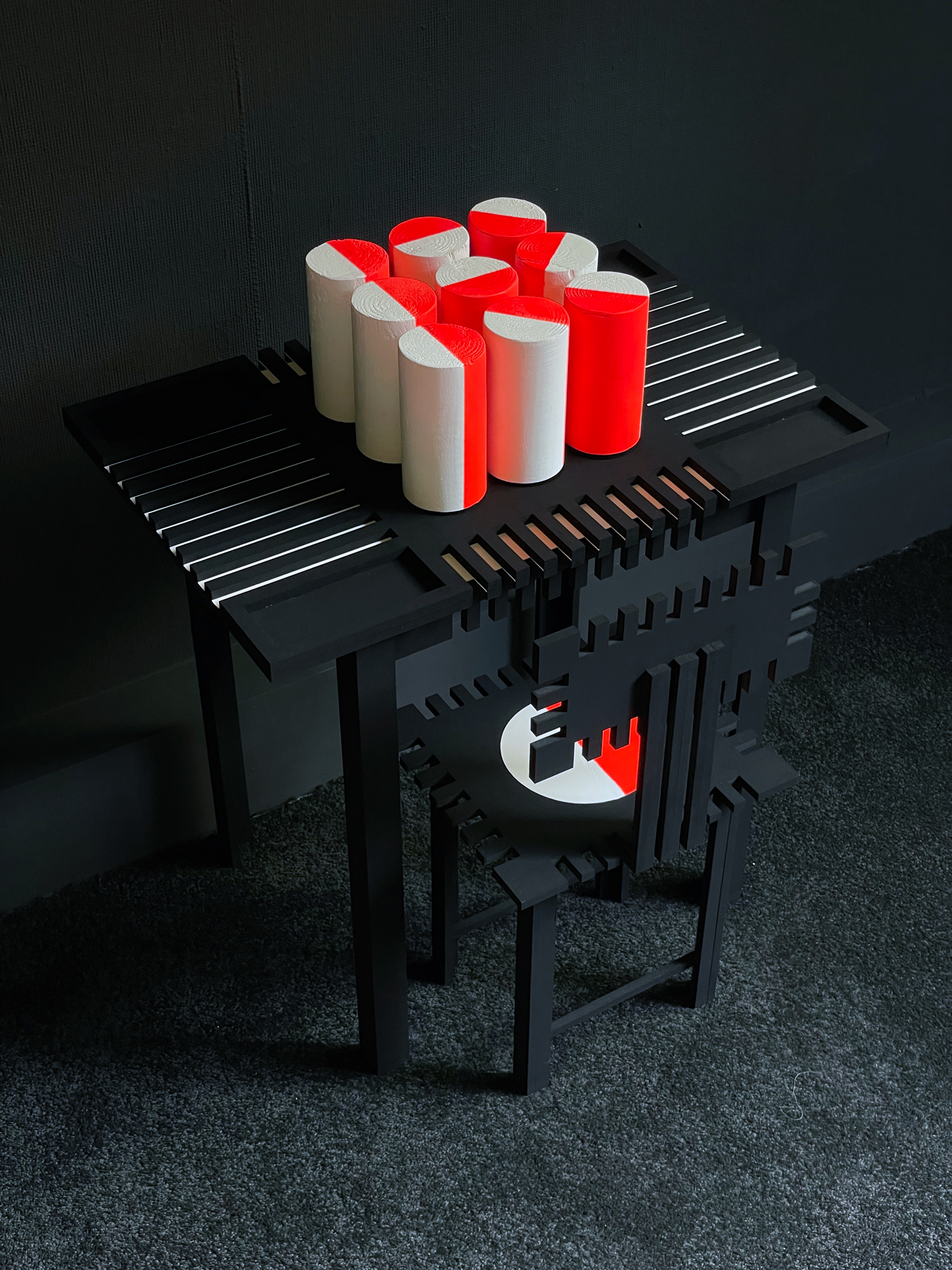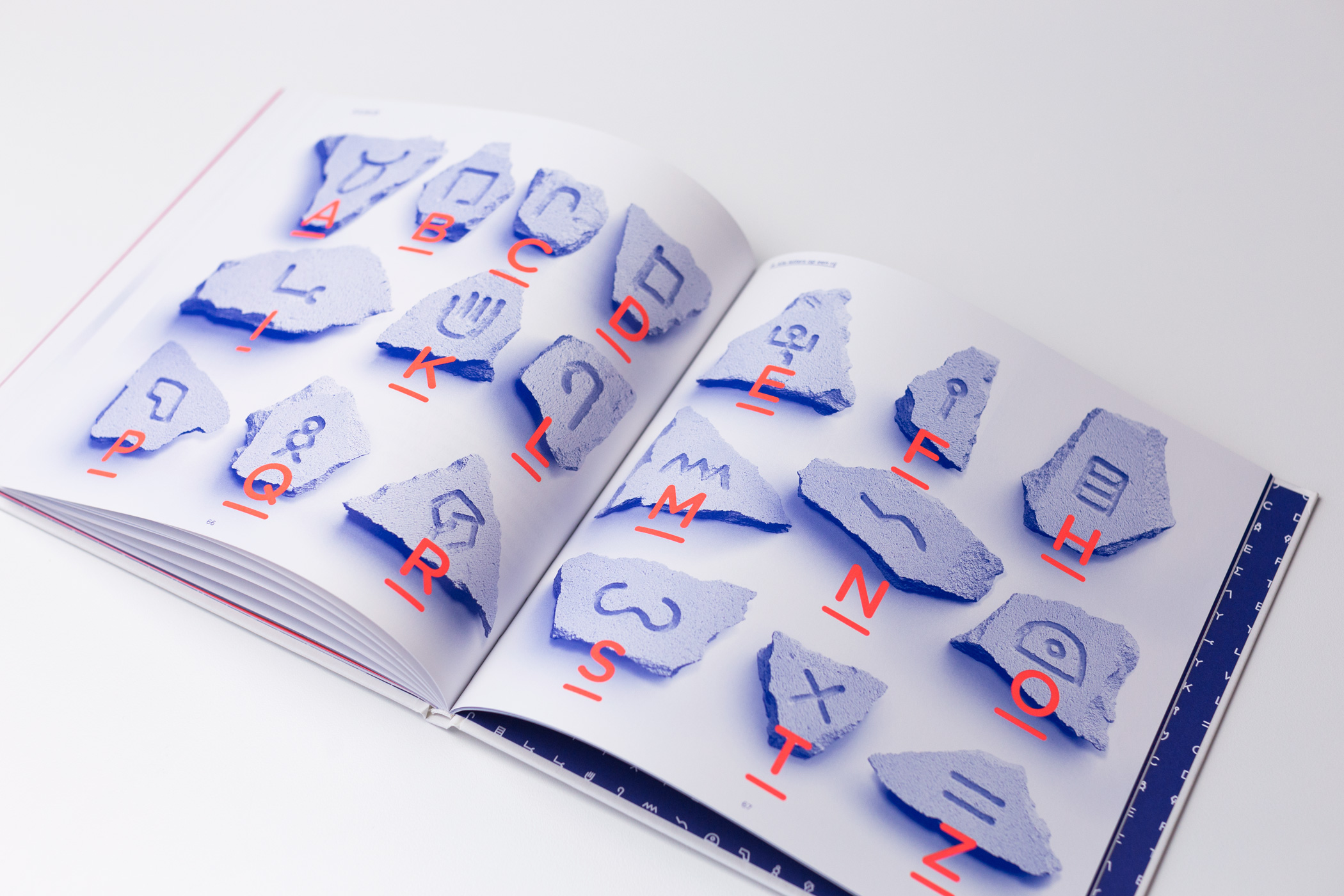A chronologic rationale
2022 – 2023
A Pre-Literate Playground: bridging the gap between illiterate and literate life
In 'A pre-literate playground', Stolte reflects on the period before he learned to write. Growing up, his mother always encouraged him to ‘fröbel’. He thought it was just a saying and always considered it an enjoyable, but thoughtless pastime. When researching his pre-school period, Stolte learned that Fröbelen is actually a term used to describe the educational philosophy and methods of Friedrich Fröbel, who was a German educator and proponent of early childhood education. Fröbel believed that education should focus on play and exploration.
Fröbel developped serval ‘gifts’, like the building block set. These materials were intended to provide children with a variety of sensory and intellectual experiences that would stimulate their curiosity, creativity, and critical thinking. Letters are not included in the "gifts" because Fröbel believed that formal education and instruction in reading and writing should not begin until the child was at least six years old. It made Stolte wonder if there is a way to introduce letters in the gifts of Fröbel, easing the transition to literate life.
Building on Fröbel's ideas in an effort to bridge play and academic learning, Stolte exchanges the rules of language that hinder him for his own rules of the letter system. In this series of works, that system has been reduced to its essence: the minimal grid of 3 by 3. At this level of abstraction, letters are barely recognizable and forming and considering letters becomes intuitive. It is a personal process of symbol formation and it invites the viewer to experiment with different arrangements and configurations and to use their imagination and creativity to create unique and interesting letter compositions. 'A pre-literate playground' is an ongoing visual research that results in dialogical typographic objects.


2018 - 2022
GLYPHS: niche parfums based on the historical origin of the Latin alphabet
“Everyone who can write must know the origin of our alphabet,” says artist Rob Stolte. When Stolte grew up, he had difficulty reading and writing. He would rather draw something than write it down. It frustrated him and he started to wonder where the shape of letters comes from.
When Stolte discovered that letters are abstract images, this all changed. Take the historical origin of our letter A, for example: it is actually the head of an ox. Turn the letter A upside down and you can still see the horns and head. Stolte realized that the way a word is displayed can convey much more than just the letters. “It offered me the opportunity to turn my weakness into a strength: express myself through typographic images and letters,” says Stolte.
It made Stolte wonder if our alphabet could be transferred in other - sensible - ways. Wouldn't it be exciting to smell a story? Or to 'read' by eating? Through these experiments, writing and reading enter the realm of intuition, memory and new ways to use our senses to make connections that enable us to communicate. It resulted in Stolte's believe that a more inclusive handling of our alphabet is possible through synesthetical approach.
This fact was the startingpoint for the creation of the perfumes (together with masterperfumer Mark Buxton and David Chieze). Since the first alphabet was carved in stone, the name GLYPHS was given to the project. It means 'to engrave, to carve'. “Now we know where our letters come from, we also know how they smell,” says Stolte. “For the first time in history we can create a scent-based writing system of the alphabet.”
2016-2018
A is for Ox: a visual approach to the development of the Latin alphabet
Pjotr van Lenteren gave a five star review in Volkskrant magazine:
A is not at all for ‘apple’, but for ‘ox’. Most pre-university students know this. But what about the other eighteen letters that form the basis of our alphabet through Greek and Latin? The D is from ‘door’. The E of ‘Hey, you there!’, the L is a rope to tie the donkey to a post and the M is for ‘water’. Just look, then you’ll see it.
To immediately remove the impression that A is for Ox, from the writer Bette Westera and visual artist Rob Stolte, only exists for prospective scientists: that is not the case. Stolte found an ingenious way to visualise the letter evolution from Proto-Sinaitic to Greek and Latin. By dividing each letter into two parts, the one pink and the other colored blue, the development through thousands of years of writing history can easily be traced back.
Once you have seen the little arms of the person who calls ‘Hey you there’, you will always recognize them in the E. And the H is of course a ‘fence’, what could it be otherwise? Westera tells a micro-story of one sentence accompanying each letter. About caravans and deserts, rivers that bring fertile silt, oxen that help to plough the tough clay, pins that help keep a tent upright. Thus each letter represents a case that was of vital importance in ancient times.
There is no big difference, says Stolte, between the origin of letters and the pictures people use today to express what they find important when they use emjoi's in Whatsapp. The story of our alphabet has been told and shown more often. But rarely as inspiring as here.
A is for Ox is translated to French and Simplified Chinese. The publication is awarded with a Golden European Design award, an 'A Design award and a Certificate of Typographic Excellence by the Type Directors Club New York.
Product photography: © The book photographer
